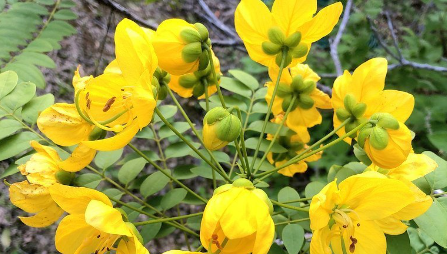What is ‘Senna spectabilis’?
Environmental groups in Wayanad have asked the Forest Department to be more clear about their plan to get rid of Senna spectabilis from the Wayanad Wildlife Sanctuary. It is known that this alien species hurts the habitats of native animals in the Nilgiri Biosphere.
Background and Impact of Senna Spectabilis
Senna Spectabilis was first planted for its looks and to provide shade, but it has since become a major environmental problem. It grows quickly and has allelopathic qualities that stop native plants from growing. This lowers the diversity of life in the area.
Intervention Strategies
At first, the Forest Department used a variety of mechanical methods, such as uprooting and girdling, to get rid of this invading plant. However, these ways didn’t work because they caused multiple coppice shoots to grow from the stumps. There are also differences in how the timber is handled and priced in different forest divisions, which raises questions about fairness and efficiency.
Proposal for Controlled Removal
Badusha, President of Wayanad Prakruthi Samrakshana Samithi, talked about the new deal that was made with Kerala Paper Products Limited (KPPL) to get 5,000 tonnes of Senna spectabilis at a lower price than in other places. He said that there should be a standard operating procedure (SOP) to make sure that the process of removal doesn’t hurt the environment even more.
Need for Rigorous Standards and Transparency
As seen in other reserves like Muthumalai and Sathyamangalam, where extraction is limited by strict rules, activists want Wayanad to follow a similar, well-researched path. To do this, a detailed SOP needs to be written so that the plant can be removed safely and effectively, with as little damage as possible to the local wildlife and habitat.
About Senna spectabilis
- Native and Invasive: Senna spectabilis, or Cassia spectabilis, is a deciduous tree from tropical South America, growing 15 to 20 meters tall. It is invasive in parts of Africa and Asia, disrupting native ecosystems.
- Medicinal Uses: Despite its invasive status, Senna spectabilis is valued for medicinal properties, particularly for treating constipation and skin diseases.
- Ecological Benefits: The tree’s bright yellow flowers provide nectar for bees, and it is used in reforestation projects on degraded lands.
Month: Current Affairs - July, 2024
Category: Agriculture Current Affairs








